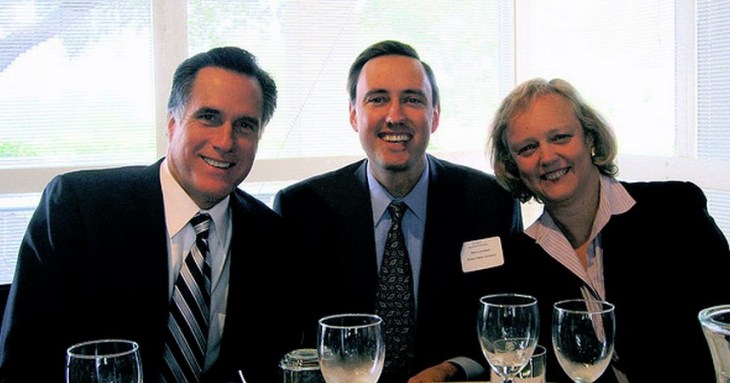Yesterday HP enjoyed a sharp rally following encouraging words from its CEO, the release of its fiscal 2014 guidelines, and promise that more cash would be returned to investors. The company, its CEO Meg Whitman said, is in the midst of real turnaround.
Yes, revenue will decline in fiscal 2014 from fiscal 2013 levels, margins remain an issue, and HP will generate non-GAAP EPS only in the range investors expected, but the company’s statement that it would devote half its fiscal 2014 free cash flow to share buybacks and dividends was welcome.
Previously, HP focused on cutting its debt load. Now, with its liabilities back in order, the company feels free to devote more of its generated cash to rewarding its owners. HP forecasts that it will generate between $6 billion and $6.5 billion in free cash. Half of that will be returned. That works out to between $3 billion and $3.25 billion.
A line from its release, recounting HP’s accomplishments in its fiscal 2013:
Recommitted to smarter innovation, with research and development (R&D) spending expected to be in excess of $3 billion in fiscal 2013.
HP has a gambit in place: New revenue sources will eventually grow and surpass the incomes generated from its shrinking personal computer business and printer business. The Post-PC age isn’t here yet, but HP doesn’t want to wait until those doors close in order to open new, replacement revenue drivers. So, as HP’s software and services top line grows, the goal is to have those dollars replace, and more, the slowing of PC and printer sales.
This means that HP is building new products, and competing with exceptionally cash-rich companies. And it is being outspent. HP yesterday stated that Microsoft was no longer just a partner, but is instead a full competitor. That’s true. Both sell software, services, and devices, often in the same product categories.
Microsoft’s recent fiscal quarter’s research and development tab was $2.8 billion, or roughly what HP spent in a full year.
This at a time when HP is turning its cash from debt retirement to paying investors. You have to ask if that money could be better directed towards aggressive hiring in the divisions that are building the 10 and 20 year internal businesses that will sustain HP in the future.
A caveat to the above: “HP will invest in its product portfolio to accelerate high-growth areas in the New Style of IT. HP plans to reinvest approximately $0.12 per share of savings from its restructuring program into the business in fiscal 2014, including products and solutions such as 3PAR, networking, Vertica and cloud solutions.” That’s smart.
But in a war between HP and rival companies that have more cash, and more mature products, you have to ask if the cash could be better spent.
$280 million. That’s the cost of HP’s quarterly dividend, according to its most recent earnings release. So extrapolated out for a full year, HP spends about $1 billion yearly through dividends. That implies that in fiscal 2014, it will spend more than $2 billion buying back its shares.
That will be a change. In its fiscal third quarter of 2013, HP repurchased a total of $3 million of its own stock. It’s planning to spend twice that much, per day, every day of fiscal 2014. That’s aggressive.
Why would investors cheer the decision? HP is worth $43 billion. Two billion dollars in buybacks per year – assuming HP continues the effort after fiscal 2014 – removes around 4.65 percent of HP’s extant stock from the market. This concentrates earnings and so forth.
But as a decision it doesn’t solve the company’s core problems: Slipping revenue and small margins.
If Meg Whitman believes in her long-term strategy, as I think she does, spending money to reward investors in the short term feels dissonant. Unless Whitman is worried enough about short-term investor pressure that she feels the company has no choice but to buy off investor discontent with its free cash flow to allow it time to make the structural reforms it needs, the cash could be better used. I doubt that.
Top Image Credit: Flickr
